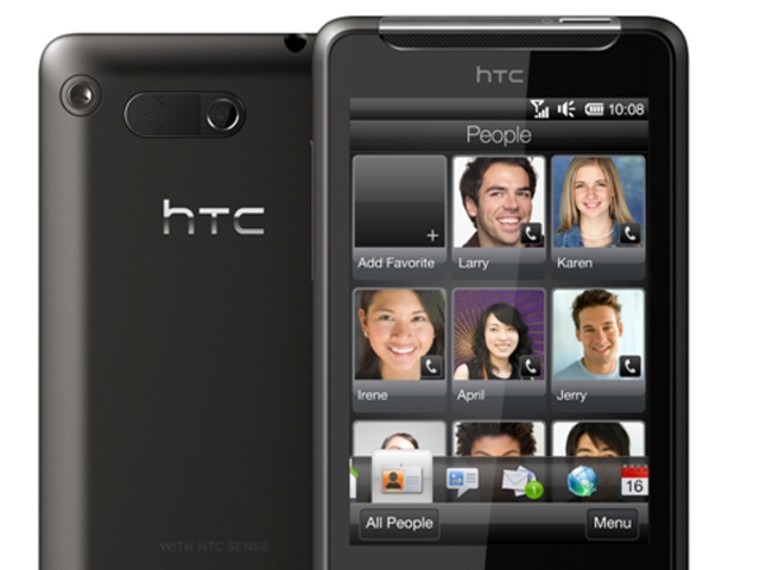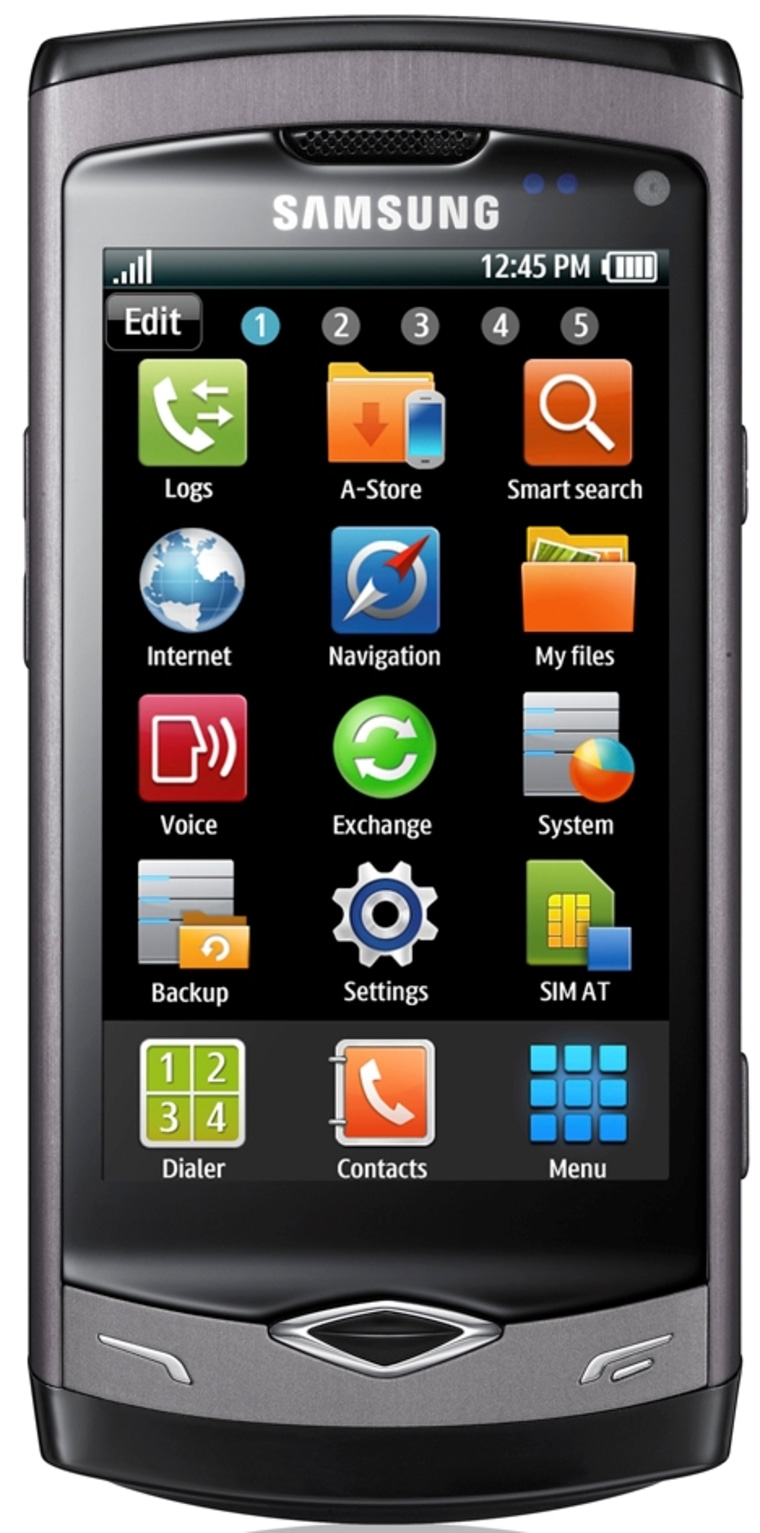Jim McGregor would like future smartphones to "zap the person on the other end when they say something stupid." The chief technology strategist for In-Stat Research is onto something. For now, the closest we probably have to that is the "mute" button. But a chief technologist strategist's job incorporates vision, and that's one vision that many might share.
"We are really just at the beginning of making these devices interface with the real world through advanced sensors and intelligent applications," says McGregor. "Future devices will be able to sense temperature, speed, direction, location, action ... and be able to communicate with you with information you may want, rather than just the information you request."
As CTIA, the wireless trade industry association, prepares to meet in Las Vegas March 23-25, smartphones with even more smarts are in the pipeline, aided by improved processing power, screen technology and internal, as well as external, software.
"Smartphones are starting to overtake the PC in terms of the primacy of getting information and entertainment from the Internet," says Mike Woodward, vice president of the mobile phone portfolio for AT&T.
"There’s a whole generation of people, who, if they wanted to go find out something, they went and sat down at the computer and got it. There’s a generation coming up behind that, if they need to grab some quick information, a movie ticket, a dinner reservation — they immediately reach for their smartphone, whether they’re out on the go or not."
App store development
Future phones may or may not look much different than the black-slab models so widely available today, iterations of the iPhone.
Even though "from the user's point of view it's the hardware that drives decision-making, much more of the differentiation and uniqueness in devices is in software," says Charles Golvin, Forrester Research principal analyst.
"Look at the influence of the app (applications) market. People aren’t making their decisions about phones based on what apps to buy. But it is becoming something of a consideration. The fact that there are so few apps for the Palm devices is in small part dampening enthusiasm for them."

Apple's App Store, with more than 150,000 apps, or programs, that can be downloaded directly to the iPhone, leads the way. Palm now has more than 2,000 apps now available for phones using its webOS operating system. Google's Android Market has 30,000 apps, and Research In Motion's BlackBerry App World, 4,700.
Smartphones, which run on specialized operating systems,continue to increase in popularity, particularly in the United States, where 25 percent more smartphones were shipped in the fourth quarter last year than the third, according to ABI Research.
While fourth-quarter results generally are the strongest because of the holidays, the results were "remarkable ... compared to the rather lackluster preceding nine months," said ABI Research analyst Michael Morgan in a statement.
"The good performance was driven in part by falling smartphone prices and the introduction of entry-level smartphones generating greater appeal for new buyers."
Processing power oomph
Samsung, the leading mobile phone provider in the United States with 26 percent of the market, according to Strategy Analytics, recently said it is creating its own operating system, "bada," for its smartphones. The first bada phone is the Samsung Wave, which will be sold in Europe and Asia starting in April.
The Wave will have a 1 gigahertz processor, which in the years ahead will become more standard fare for smartphones, experts say. Many higher-end smartphones now use processors of 650 megahertz. The relatively new Google Nexus One uses Qualcomm's 1 GHz Snapdragon processor.
"With PCs, you always used to talk about how many megahertz your processor was, then it became how many gigahertz your processor was, how much memory did you have in it — it’s not so different in phones these days," says Justin Denison, vice president of strategy for Samsung Mobile in the United States.
"Smartphones now and in the future are delivering similar performance to what PCs delivered just a few years ago," he said. "Gigahertz-processing technology will become kind of the new benchmark here very shortly. And certainly you can just draw the line, following Moore’s Law, or whatever analogy you want to use, and predict how quickly we’ll move to 2 GHz processors in phones, much like we have in PCs."
Faster video, graphics performance
Faster video and graphics performance, so that smartphones can more easily become portable video players, are also part of the equation, Denison says.
"From a 3-D gaming and graphics perspective, if you enable faster 3-D processing, then you get into more realistic games, games that you only would have seen on your Xbox in the past, so now you can now see them on your phone and they perform in a similar manner."
"You almost never see personal DVD players on airplanes anymore," notes Woodward of AT&T. "Instead, you're starting to see people sitting there and watching their smartphones."
Phone displays screens, too, will continue to improve in resolution and technology.
Last year, for example, Samsung introduced some feature phones that use AMOLED — active matrix Organic Light Emitting Diode — energy-efficient display technology which makes the screen brighter. The company plans a "Super AMOLED" display for the new Wave, which has a 3.3-inch display.
"In really simple terms, with Super AMOLED, we've integrated that touch-screen layer onto the display itself, so we’ve kind of combined those two," says Denison. "That makes the device thinner, as well as less error-prone (to touch) and more responsive, as opposed to having two (display) layers that have to communicate to each other."
Multitasking
As part of "seeing smartphones continue to behave in a richer fashion, so as to imitate the PC," Woodward says, multiasking is "something we would expect to see happening."
Multitasking — the ability to run more than one program at once, and switch back and forth seamlessly — is handled fluidly on some smartphones like the Palm, where, for example, you can be reading your e-mail and listening to music at the same time.
Many iPhone users hope that the next-generation, iPhone OS 4.0, will incorporate multitasking, although Apple has not commented on that.
Multitasking has been part of Windows Mobile's operating system, although it will not be part of Microsoft's newest OS update, Windows Mobile 7. (Msnbc.com is a joint venture of Microsoft and NBC Universal.)
Among the reasons multitasking is discouraged in phones is because of security issues, and because it's the kind of activity that can more quickly drain a phone's battery. And that may be where the smartphone-as-PC notion loses ground for some.
Still, others are excited about the potential use of sensors that can communicate with the phone for a variety of tasks.
One company, Synaptics, "has a new development platform called Fuse. It is still rather simple, but it at least starts using sensors for gesture and motion control," says McGregor of In-Stat Research. "This isn’t much, but it allows you to finally have a handset that you can use with one hand, which is a novel concept."
"Whether it’s sensors or watches or heart monitors, that’s a coming capability," says Golvin. And many of those sensors will use a low-power version of Bluetooth, the short-range wireless technology, that will have very little battery drain. That version should be available by the end of this year.
